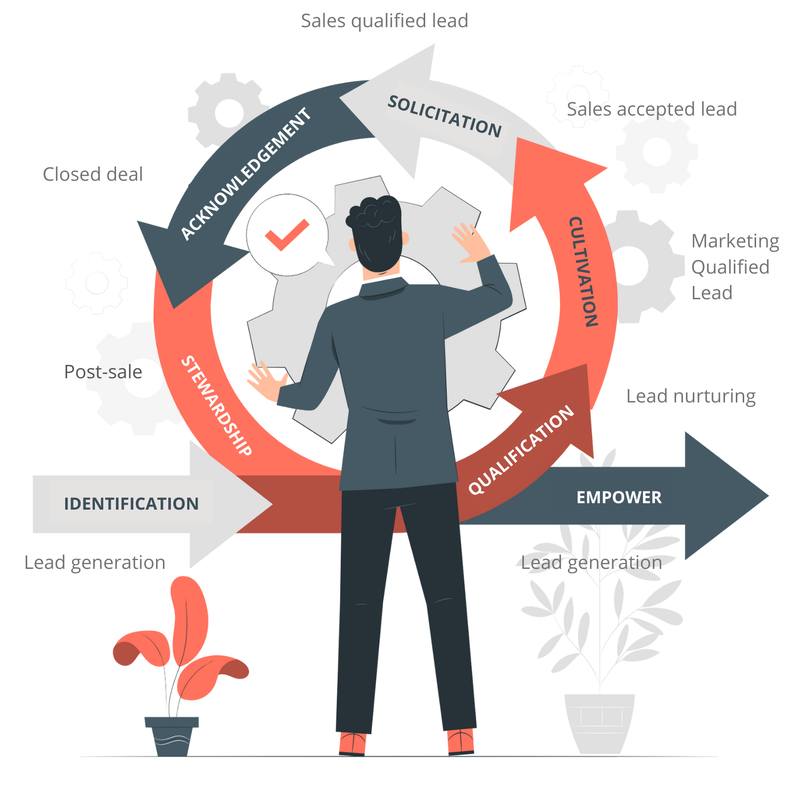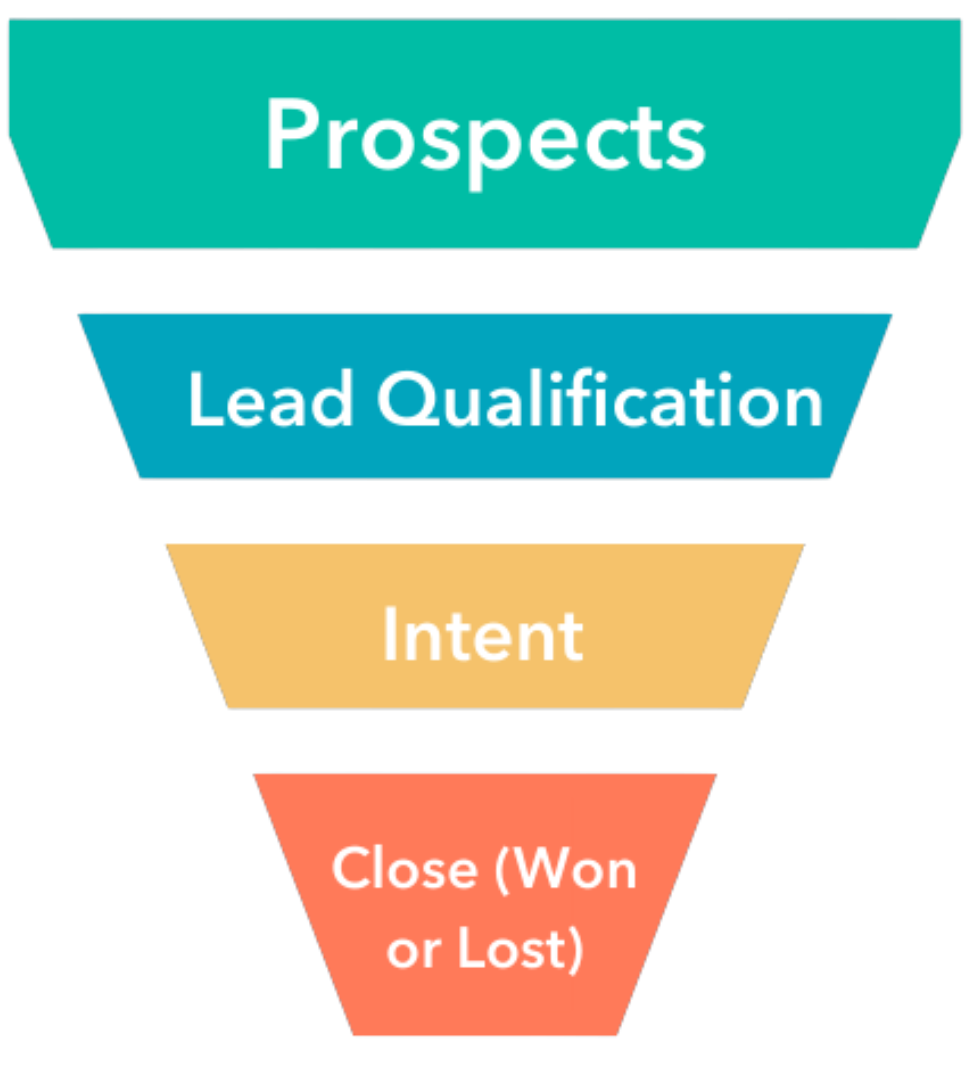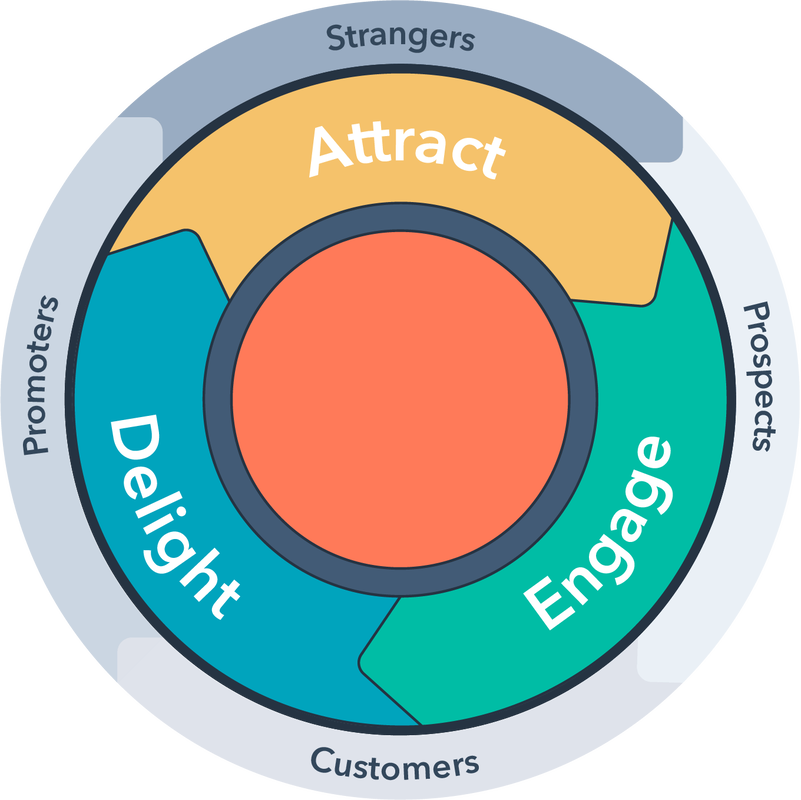DONOR CYCLE VS SALES PIPELINE VS CUSTOMER FLYWHEELMost of us know the story of goldilocks and the three bears. Something is too big, maybe too small but then there is that one thing that is just right. Increasing your donors or developing a system to steward your donors is the same way. There is no one method. Each organization and business is different but that is not to say that you can not streamline your efforts to more efficiently grow your donors. To create your system, let's look at the top three cultivation frameworks that are used both in nonprofits and large corporations.: Donor cycles, flywheels and sales funnels (oh my! .... just kidding - now we are mixing up our fairytales). These are all marketing concepts used to drive conversions, but they have slightly different focuses and objectives. Let's explore the key differences between and how they can be applied to create a fundraising pipeline that works for your donors... SALES FUNNEL OR PIPELINE
A Sales Pipeline (from the salesperson's perspective) is a specific sequence of actions that a sales reps takes in order to move a prospect from a new lead to a customer. Traditionally, the stages of a sales cycle is structured something like:
CUSTOMER FLYWHEEL
donor cycleA donor cycle is a framework for managing relationships with donors or potential donors to a non-profit organization. The cycle typically consists of five stages. In each stage, the non-profit organization aims to build a relationship with the donor, educate them about the organization's mission and impact, and encourage them to contribute financially or in other ways.
DONOR CULTIvationSales processes can and should easily be adapted to your nonprofit. The backbone of any successful fundraising operation is an understanding of the cultivation process and coming up with something that works for you. The largest difference between a sales pipeline and donor cycle is that a large portion of effort goes into retaining and re-engaging donors and eventually turning them into your advocates. For example the visualization above has both the generic markers of a sales pipeline but it has been reinvented into a circular process for a nonprofit to retain donors and inspire future cultivation.
1. Sales Funnel: Action. Although being focused solely on the sale or donation in the sales funnel is severely flawed, so is focusing solely on the relationship without making timely and thoughtful asks or engaging your donors to act. 2. Flywheel: Delight! Remember your donors give because they care, but have fun. Celebrate your achievements, contributions and the work you are able to do together through suburb customer service. 3. Donor Cycle: Just right. This should be your basis. The Donor Cycle encompasses concepts both from the flywheel and pipeline but is a specific to cultivating donors. How do I create a donor cycle? You now may be saying, "thanks, this is great information" but I encourage you to take it a step further and act on this knowledge. "HubSpot is an app I came across several years ago when I was a first-time nonprofit director asking myself how can I grow our nonprofit organization with a limited budget." says our Member Center co-founder, "I was looking to quickly and efficiently document relationships and increase revenue with limited resources. This is when I found HubSpot. It is a completely free online software built for sales reps." HubSpot's sales section has a built in sales pipeline called "Deals". These deals link with individual and company contacts, allow you to set financial goals, and keep track of your progress. You can have multiple deals and multiple pipelines, all of which are fully customizable. Below is an example sequence used for grants with some sample deals. Notice, each deal has a deadline to fit within the grant cycle. Values added to each deal helps track annual progress on the HubSpot dashboard. Example of a HubSpot sales pipeline used for fundraising: Member Center is an a HubSpot plug-in allowing you to affordably document subscriptions and memberships.
Comments are closed.
|






